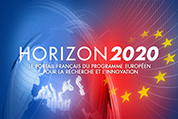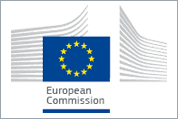ESR2.a: Nele BOERSINGAcoustic shielding and elastic experimentation

Nele BOERSING: I grew up in a small city in Northern Germany and enjoyed the vicinity to the Baltic Sea with all its advantages quite a lot during my childhood. From 2010 to 2013 I studied Geosciences as an undergraduate at Potsdam University, Germany, where understanding physical phenomena on Earth fascinated me the most. During my bachelor thesis at the GFZ in Potsdam I performed a numerical study to assess the productivity of a geothermal reservoir, including effects of a potential stimulation. In 2013 I started the IDEA League joint master's program in Applied Geophysics, which involed a semester at TU Delft, ETH Zürich and RWTH Aachen as well as a final thesis which I did with Florian Wellmann at RWTH Aachen in the department for computational sciences. Again, I worked on a more hydrothermal related topic in my thesis, more precisely on entropy production in convective hydrothermal systems. After graduating, I decided to stay in academia and work on a PhD about wave propagation. My PhD at ETH in the group of Johan Robertsson will be about acoustic shielding and elastic experimentation in the WaveLab, a wave propagation laboratory for immersive experimentation.
Main host institution:
Eidgnössische Technische Hochshule Zürich (Zürich, Switzerland)
Supervisor:
Johan Robertsson (johan.robertsson @ erdw.ethz.ch)
Secondment institution:
Objectives:
Recent findings by Thomson based on Green’s and reciprocity theorems demonstrate how, given measurents of pressure and particle velocity on a closed surface, operators can be derived that identify and separate the contributions due to sources located outside and inside the surface itself. This result has applications to the problem of acoustic shielding/cloaking. ETH WaveLab implements so-called exact boundary conditions (EBCs) for immersive experimentation and allows experimental verification of Thomson’s results. Thomson identifies such operators on the basis of Green's theorem and the elastodynamics reciprocity relations. The ESR will explore the link between EBCs and Thomson’s source separation and the consequences of this result for acoustic shielding. The ESR will also investigate the use of EBCs for elastic experimentation in tanks by replacing, in immersive experimentation, the fluid surrounding the solid object of interest (and coupling it with the numerical domain) by an elastic medium that matches the object itself.
Expected results:
- Experimental verification of Thomson’s findings.
- Novel, Thomson-inspired and EBC-enabled method for concealing an object from detection by reflected/scattered waves. Experiments will be conducted at the WaveLab to test the performance of this shielding technique.
- Determination of theoretical relationships between the EBCs and Thomson's formulation.
- Novel methodology for elastic experimentation in tanks.
international conferences:
- ASA - Meeting of the Acoustical Society of America, Boston MA, 25-29/06/2017: poster on Reflection coefficient measurement using a finite-difference injection technique (1pUWc12)
Key Facts
- Coordinated by Université Pierre et Marie Curie
- 15 participating partners
- 6 European countries and the USA
- 15 trained fellows
- Project budget: 3 227 952.96€
- Project duration: 4 years
- WAVES is a European project funded by the European Union’s Horizon 2020 research and innovation programme under the Marie Slodowska-Curie grant agreement n° 641943.
Contact
Coordinator:
Lapo Boschi (lapo.boschi @ upmc.fr)
Project Manager
Fanny Schultz (fanny.schultz @ sorbonne-universite.fr)



